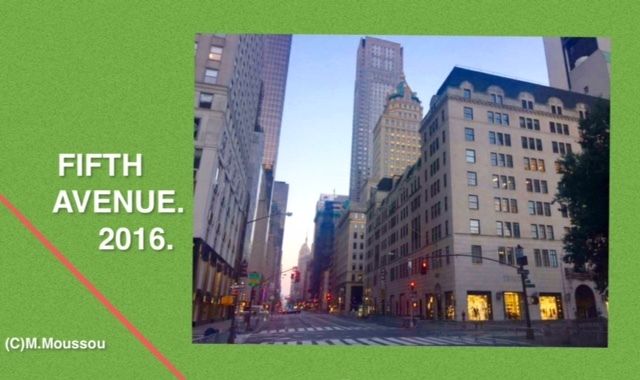
Despite the current crisis that brick-and-mortar retail is experiencing at present, threatening the very existence of many boutiques and even department stores, prices during 2016 seem to be soaring to record levels in the prime luxury commercial real estate on New York's Fifth Avenue and Rodeo Drive in Los Angeles, the two most important main streets of America, that have been defining the Luxury Industry for the past fifty years.
‘In the name of Gucci’ is the title of Patricia Gucci’s recently published book. Though narrated in the first person, the book deals mostly with the life and exploits of her father, Aldo Gucci, the figure responsible for the meteoric expansion of the Gucci brand from a small luggage maker in Florence to a multi-million dollar empire with stores around the world.
In an exclusive interview Miss Gucci tells us about the role her father played in the forging of what is known today as the Luxury Industry and of Dr. Gucci’s contribution in the creation of the Luxury Mile on New York’s Fifth Avenue and of Rodeo Drive in Los Angeles- two projects that changed the concept of shopping and the face of both cities for generations to come.
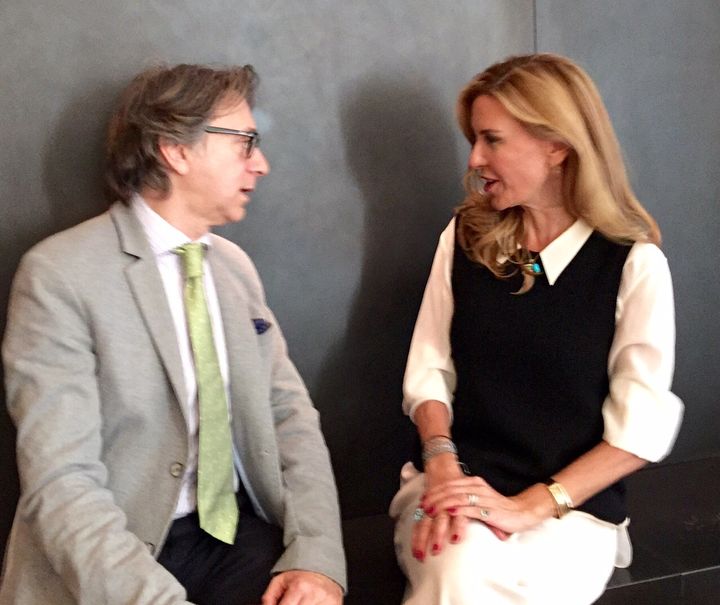
Aldo Gucci : Man and Creator
Depicted as soft-spoken and loving father and husband, behind the iron mask of a business person, Aldo Gucci’s life has the characteristics of a twentieth-century epic tale. Reminding us of “A man of many devices, who wandered full many ways”, as Homer defined Ulysses, Miss Gucci’s narration begins to unfold the various ‘exploits’ and stratagems of the man responsible for far-reaching and drastic changes in several fields affecting our lifestyle.
In travel, Gucci created expandable and lighter suitcases. Accessories: Gucci has produced some of the most iconic handbags and head scarfs, while the ‘Gucci Loafer’ is considered by many the most successful creation in footwear history. Promotion-wise : some of the most representative celebrities of last century (such as Ingrid Bergman, Jacqueline Onassis and Grace Kelly, to name a few) make an appearance in the pages of the book, falling in love with a specific Gucci product and adopting it for life. During the course of the story’s unfolding, we see how Dr. Gucci revolutionized the marketing of luxury goods with the use, for instance, of direct mail. But in no field was Dr. Gucci’s contribution more significant and groundbreaking than in that of commercial luxury real estate in the great American cities.
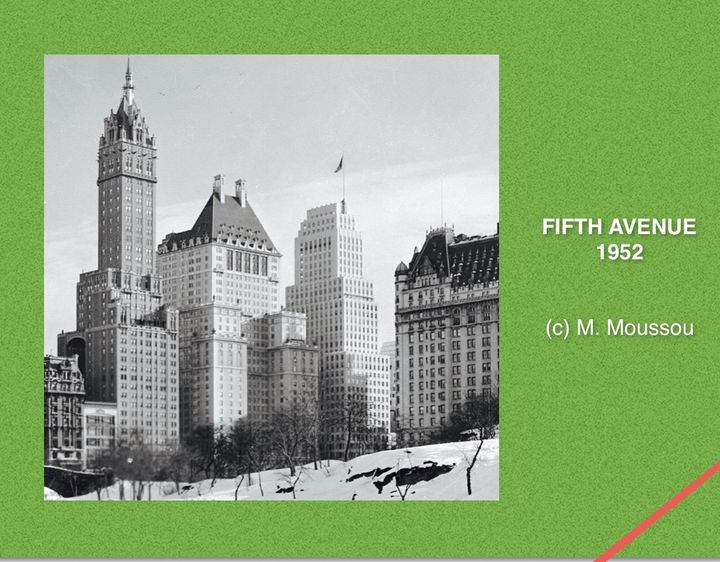
The Gucci Real Estate
During the1930s, Aldo Gucci had moved the company’s thriving flagship from the more provincial Florence to Rome’s prestigious Via Condotti. The end of hostilities of the Second World War sparked the revival of the tourist industry. Thus, the Gucci store in Rome became a point of reference for the ever growing number of American tourists visiting Italy, who wanted to bring back home Italian luxury products. Yet Dr. Gucci, sensing the necessity of breaking into a global market, decided, in 1952, to checkmate the luxury market by opening a Gucci store in New York. The daring move of showcasing Gucci, and by extension Italian products in the heart of the American market, would transform the luxury industry forever.
“My father was the first European to incorporate his firm in the United States He came to America to embrace this huge country with its unique, diversified culture. He had the courage of his convictions to follow through in positioning himself and becoming a leading force”, Miss Gucci explains. Dr. Gucci achieved this success mostly through the ‘Made in Italy’ concept : “It’ s about design , quality of workmanship and an aura of a distant and beautiful Italy. We can safely say that my father was the creator of this concept, which has become one of the dominant themes of the luxury market”.
Faith Consolo Hope, leading specialist of the American luxury retail market and Chairman of The Retail Group at Douglas Elliman Real Estate remarks:
Aldo Gucci’s move positioned the Avenue in the luxury direction which then was jumpstarted when Gucci moved to the 54th Street corner many years later.
No other business person has so fully grasped the importance, one could say the essence of Midtown Manhattan, along with the commercial potential of Fifth Avenue, as Aldo Gucci did.
The first Gucci store in New York opened at Seven East Fifty-Eighth Street in the prestigious Plaza-Savoy Hotel on Fifth Avenue, across the street from its sister, the Plaza Hotel and the iconic Sherry-Netherland.
The future has proven Dr. Gucci’s instinct for real estate correct as Estee Lauder, the Fifth Avenue Apple Store and more recently Cartier have followed in his footsteps as retail tenants at the same address (today the Plaza Savoy has been replaced by the equally prestigious General Motors building).
In the1950s, the ‘Upper Fifties’ city blocks of Fifth Avenue showcased Bergdorf Goodman’s full frontage between Fifty-seventh and Fifty-eighth Street, Tiffany & Co diagonally across, with Harry Winston and the Coty Building (now Henry Bendel) with its Lalique glass windows (reflecting the delicacy of the crystal bottles of the Coty perfumes) only a block away. These stores provided the infrastructure for the development of the luxury industry in New York. About eight city blocks south, Saint Patrick’s Cathedral, Saks Fifth Avenue, and the Rockefeller Center were forming another upscale hub on Fifth Avenue, with the silhouette of the Empire State Building adding drama in the distant background.
Thus, a seven-block gap existed in the mid-Fifties, hosting mostly airline agencies and National Tourist Board showrooms from various countries. If this gap were bridged, a commercial ‘luxury mile’, unique in the world, could be created along this section of Fifth Ave
Cartier, Fendi, and Ferragamo were among the first luxury giants to respond to this challenge. Then, legendary Greek shipping magnate Aristotle Onassis added an upscale residential touch to the overall concept, creating, in 1972, the Olympic Tower. He was followed soon after by Donald Trump. These residential buildings introduced New Yorkers to the then fairly novel notion of the ‘luxury condominium’. They began playing on popular imagination with the notion of creating a neighborhood of luxury homes at the heart of a luxury commercial area, an idea that gradually led to today’s transformation of Manhattan’s 57th Street into Billionaire Row and of the area at large into one of the most iconic neighborhoods in the world.
By 1981 the gap was bridged. This was the moment when Gucci owned the two corners of Fifty-Fourth Street and Fifth Avenue. New Yorkers began referring to this crossroad as ‘Gucci City’.
“It was an entirely new concept of expansive commercial space with clients moving freely from one section of the store to another”, Miss Gucci recalls. “Men’s in one area, leather goods in another, accessories and gifts further down and shoes somewhere else …. It was the creation of the Gucci World .
Aldo Gucci also created in the same building The Gallery, a VIP lounge where selected customers, surrounded by works of art and precious handbags would come to relax, have a glass of champagne and eventually shop in privacy.
“Guests were given access to the gallery through a private entrance using their key,” Miss Gucci recalls. “We did order about one thousand gold-plated keys and handed them over to our clients. They were gone in record time. Owning a Gucci key became a must in New York social circles.”
In truth, the first flagship, as we understand the term today, was the Ralph Lauren townhouse at 72nd Street and Madison.
Miss Consolo is calling our attention to the first brand store, ever to be transformed into a thematic set for the display of commercial products - in Ralph Lauren’s case, the creation of a hunting lodge, reflecting the by-gone era of English squiredom.
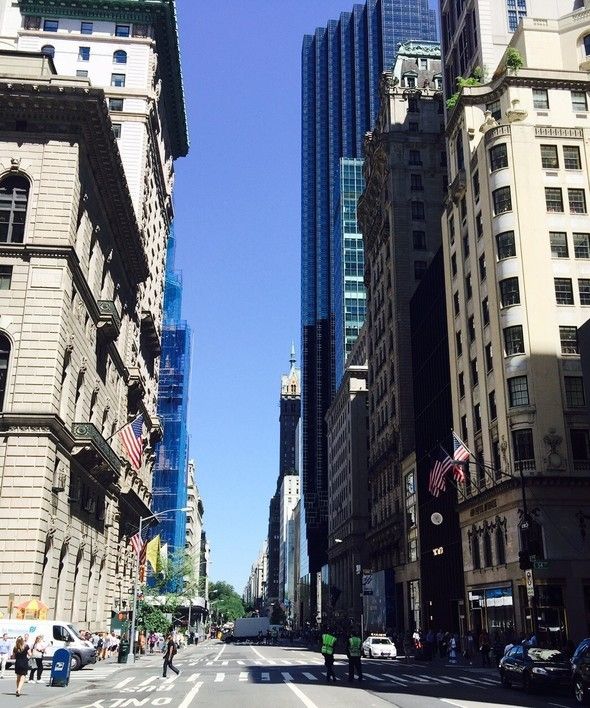
Consumers today expect from brands a vast array and choice of products ranging from clothing, to accessories, to housing items and bedding. But in the late 1970s, the gathering at Gucci Land of so many diverse products under the umbrella of a single brand was unprecedented, in both scale and range.
The 1970s were also a decade marked by the upward mobility of the lower middle classes. No longer focused on social issues, as in the previous decade, people began centering around their own selves. In fact, the prime concern of the ‘Me Decade’, as the generation was coined by Tom Wolfe, became that of asserting oneself in society. Or, as the great artist and popular guru Andy Warhol defined the movement as : ‘everyone’s to fifteen minute of fame.
Every social movement needs a flag-bearer, who openly promotes the idea and becomes a symbol of it. By the late 1970s, the Me-Generation was about to get its flag-bearer with a vengeance. Miss Gucci comments on this period:
“In the 1970s everyone wanted a share of the dream. Most luxury brands, however, kept their distance from the have-nots. My father, on the other hand, always felt that there was a market for everyone. So he tapped into it. Since very few were in a position to buy a crocodile bag, he created affordable lines that would allow many more to own a piece of Gucci. This was the beginning of the democratization of luxury. People would arrive at the Fifth Avenue Gucci Land to indulge in luxury but would leave having bought a small item. My father was so ahead of the times….”
After Aldo Gucci, a Fifth Avenue shopping experience could no longer be limited to ‘Tiffany’s, Cartier, talk to me Harry Winston tell me all about it’- to quote Marilyn Monroe in Diamonds are a Girl’s Best Friend. Gucci Land became a magnet for people from all walks of life who demanded their share of luxury. Yet it was this democratization of luxury,that opened for the company vast new markets, turning thus Gucci into the first truly global brand and into one of the most profitable corporations of the 1980s
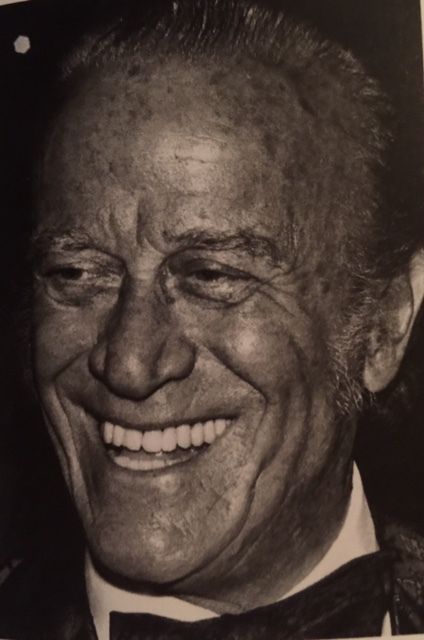
Gucci in The City of Angels
Aldo Gucci’s decision to expand westward, where no other European brand had ventured before , was of crucial importance to the development of the Luxury Industry. By introducing Los Angeles to the concept of the flagship, the name Gucci would radically alter from luxury brand to cultural American icon.
The city of Beverly Hills did not incorporate with the city of Los Angeles until 1914. As restrictive covenants on the use of land were applied, personalities from the film industry began to move to the area, building large mansions. These new high-end neighborhoods eventually brought about the creation of the Beverly Wilshire Hotel and of a few small restaurants and boutiques in order to better serve this posh community; businesses were lined up along a rather dormant three-block stretch known as Rodeo Drive. It wasn’t until 1967 when the former manager of the Beverly Hills Hilton, Fred Hayman decided to open a luxury store, showcasing several prestigious American fashion designers, gathered under the umbrella, or rather the yellow and white striped awning of Giorgio of Beverly Hills. Despite its instant success, due to the patronage of stars of the magnitude of Frank Sinatra, Giorgio’s location at the time was considered somewhat remote, even by Los Angeles standards of distance.
Any argument about the remoteness of the location was dispelled a year later when Aldo Gucci selected the specific street for his Los Angeles store. Gucci, the first European luxury brand to venture on the West Coast, took the City of Angels by storm. The combined success of both Giorgio and Gucci was impressive enough to attract Jerry Magnin (the progeny of Ralph Lauren) who settled on the Drive bringing to Los Angeles the preppy Polo look from the East Coast. Led by Van Cleef and Arpels (and other Fifth Avenue Gucci neighbors), arrivals multiplied. Soon, brands began struggling to obtain the limited retail space available. Rodeo Drive became the first all-luxury exclusive enclave in the world and to date is considered one of the most successful examples of city planning commercial land-use.
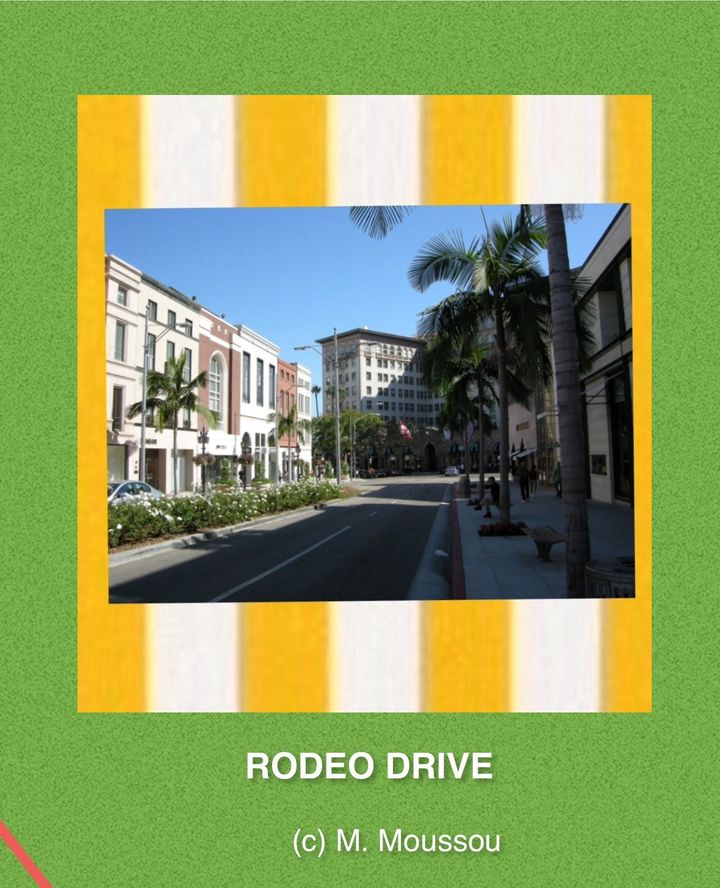
Flagships in the 21st Century: Physical or Virtual ?
One of the most controversial issues of the past few years is the debate over the consequences of online shopping on brick-and-mortar stores. In the Luxury Industry, a frequently asked question is to what extent the Internet can replace the physical experience of shopping at the flagship of a brand.
London-based certified Social Media professional Dennis Koutoudis says:
“A great deal is being said about the rivalry between the Internet and the so-called bricks and mortar businesses (the physical store). In luxury things are not so clear cut. Social Media may be offering the complete array of a brand’s products but it cannot replace the flagship, a space whose function is not just the display of products but the communion of the brand’s personality and aura. It is an emotional experience triggered by immediacy. In the end, behind social media and behind luxury you still have people.”
When it came to Gucci real estate my father had the Midas touch
Whatever property Dr. Gucci would select for a store, the surrounding real estate would turn into gold. Fortunes were made by simply following Aldo Gucci’s footsteps. Today, more than twenty-five years after Aldo Gucci’s death, Fifth Avenue is unquestionably the leading high-end commercial thoroughfare of the world with the largest concentration of brand flagships, and with the Made-In-Italy brands, triumphantly leading the way.....!
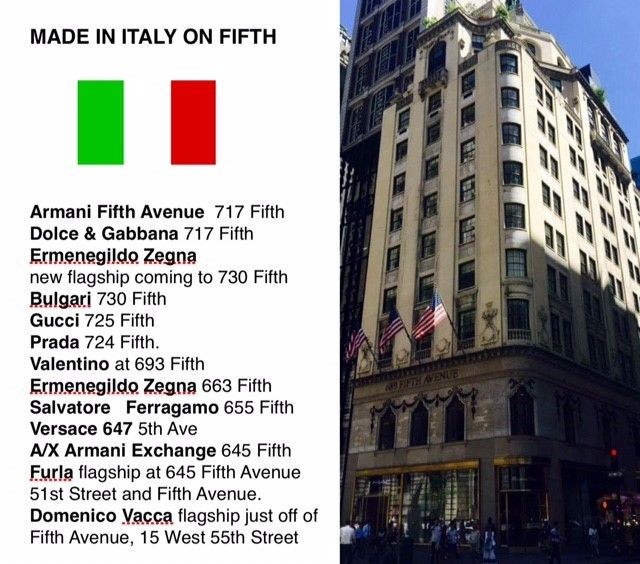
At Rodeo Drive, only recently, Chanel purchased for $ 152 million the store it had been leasing, setting a record price for retail real estate. The essence of luxury commercial properties could be summed up in the memorable scene of Robert Marshall’s blockbuster romantic comedy Pretty Woman when Julia Roberts discovers ‘Rodeo Drive.’ As Richard Gere leads her along the pavement, walking in and out of luxury brand boutiques, with a credit card in her possession that allows her to ‘shop ‘till she drops’ and Roy Orbison singing “Pretty Woman, walking down the street,” the film fulfills the fantasies of every shopper on earth.
In the case of Fifth Avenue Miss Consolo clarifies:
Fifth Avenue, through all the downturns, has not only retained its value but has increased even in the last year over 20% to record high numbers of $5800 per square foot. The prospects are good and only getting better as space becomes available and gives entrée to yet another luxury brand to not only enter the US Market but to unveil a national presence i.e.: the corner available in Rock Center previously occupied by Façonnable (the SW corner of 51st)

Three new flagships have recently opened on Fifth Avenue; one from each category of the Luxury Industry. From the field of accessories, Coach is on its maiden Fifth Avenue voyage opening soon on the south corner of the former Gucci Land. After wandering for years on Madison Avenue, Valentino has made his comeback on the Luxury Mile. In a funny twist of fate, both brands are flanking 689 Fifth- the former Gucci Flagship where it all began. A few blocks further north, Hublot of Louis Vuitton has gone as far as purchasing a property adjacent to the mother store and has rebuilt it into an impressive flagship to display its watches. As for Gucci, well, the brand is now positioned on the South corner of the Trump Tower.
Miss Consolo concludes:
‘There is luxury in other areas of the City such as Madison, Meatpacking and Soho but nothing that defines the sector such as Fifth Avenue….the home of “luxe” not mere luxury. ‘
‘In the Name of Gucci becomes a clarifying answer to the hypothetical question:
“What would Fifth Avenue and Rodeo Drive be like today, had Dr. Gucci not opened his New York store in 1952?”

